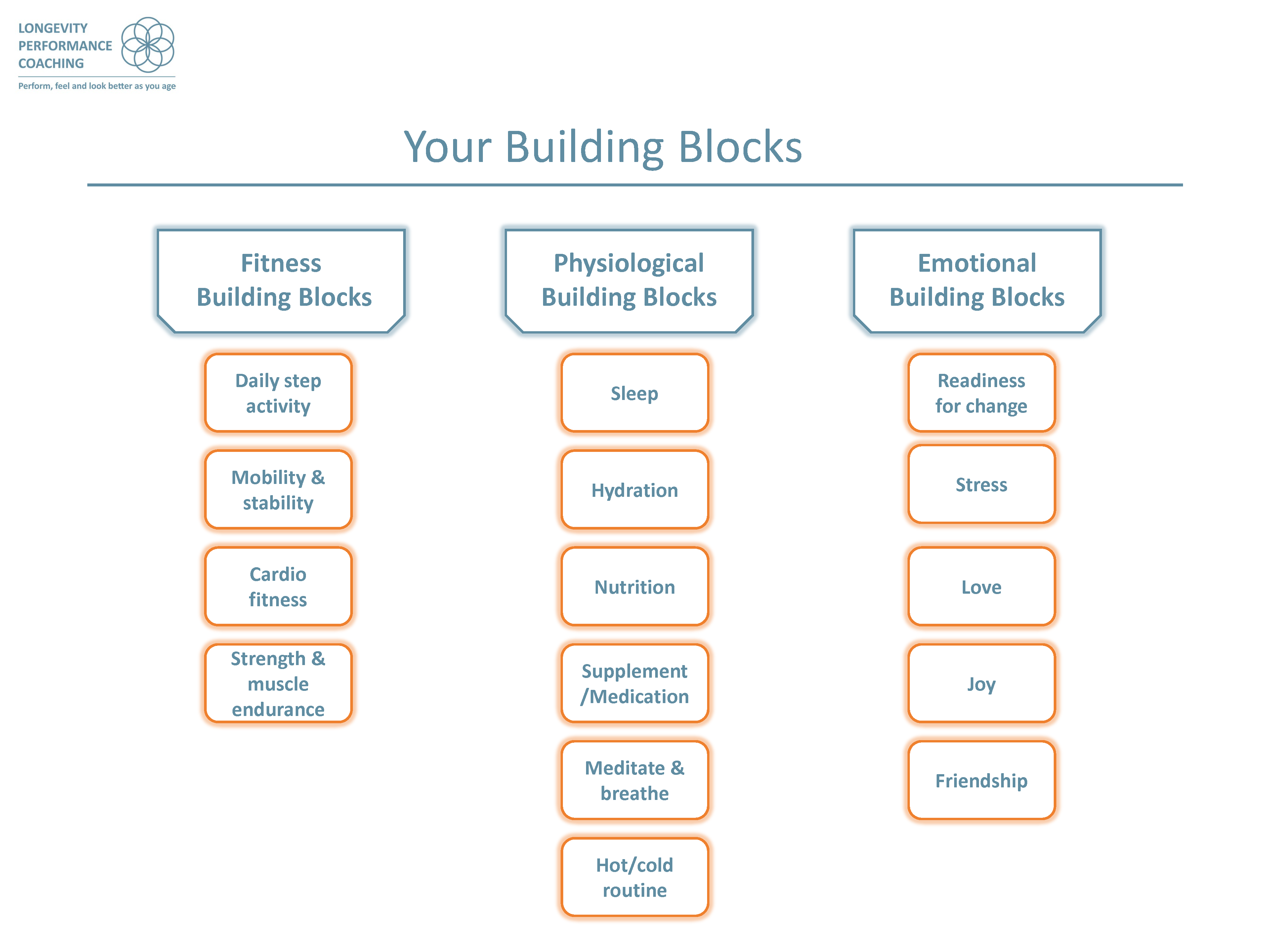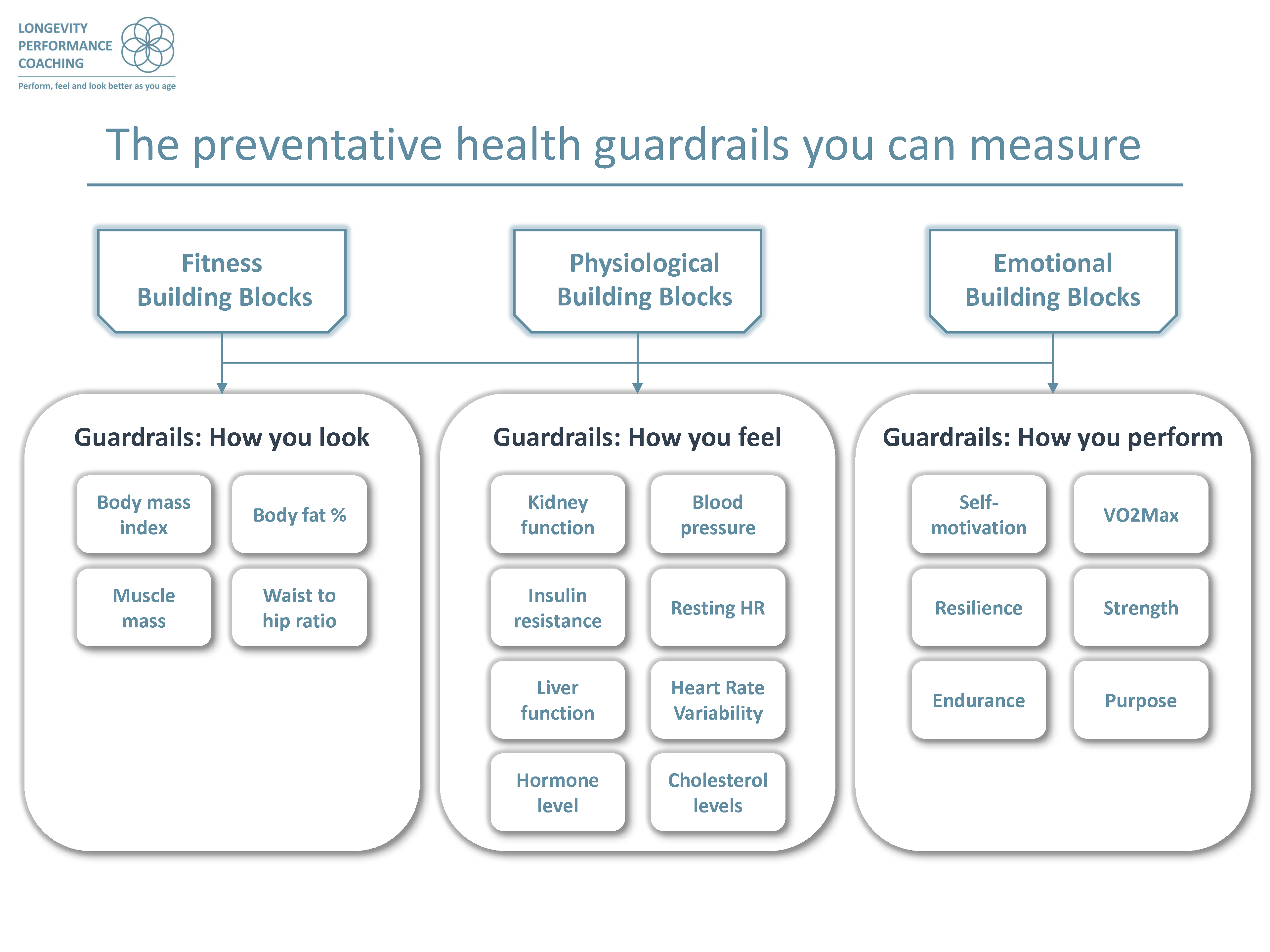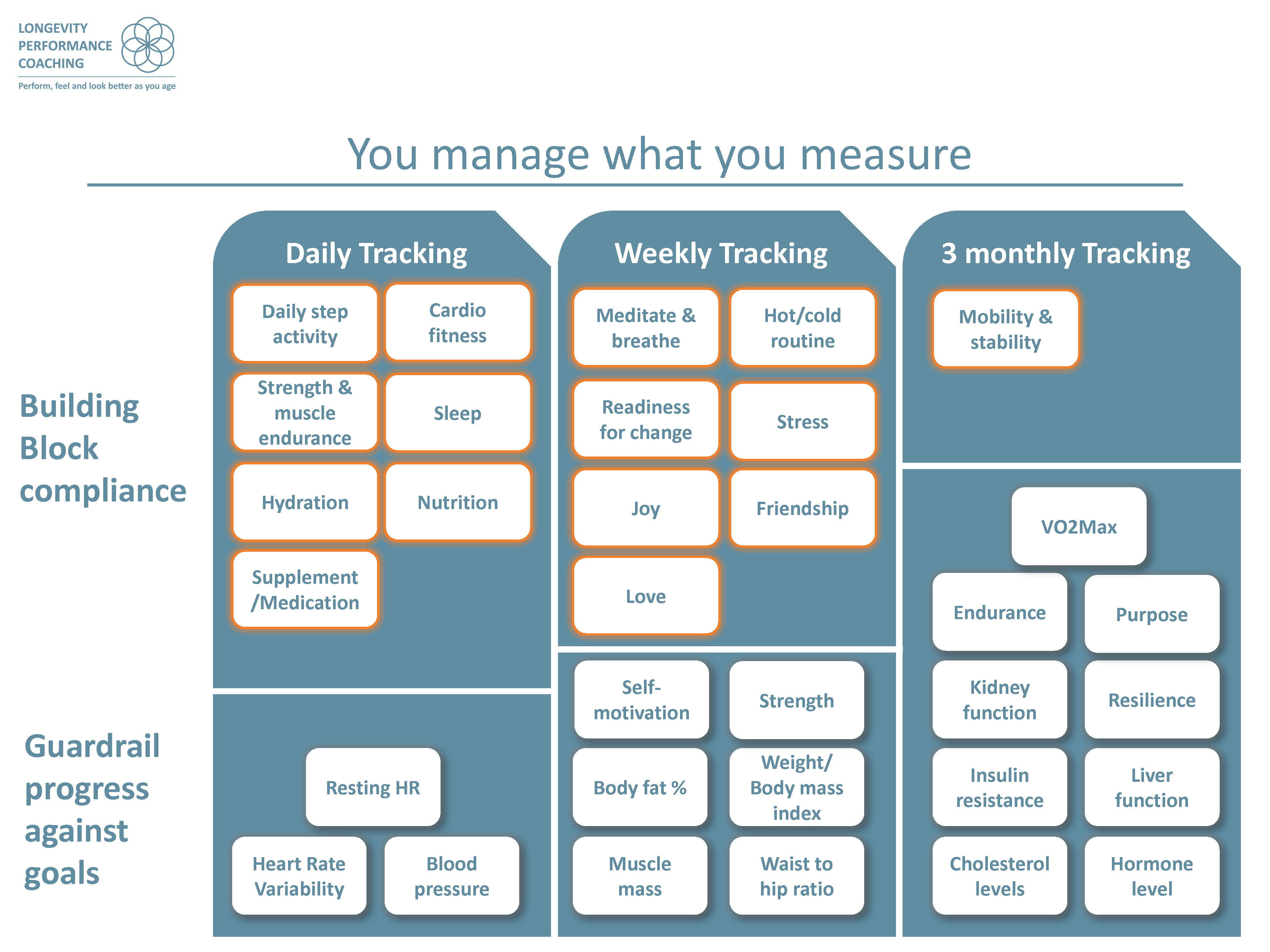
How to Stop the Decline

My social circle is nearly all people aged 40+. At any social event the conversation quickly turns to what pain, medical condition, injury they have or concern about how getting older makes them look.
As I’m the one who works on longevity, the conversation gets directed at me to provide some inspirational advice.
Everyone is different and everyone has a different present day state and what they are capable of. Which means it’s unhelpful to give generic advice or say this works for me so it should work for you.
During the conversation they usually tell me why they can’t do things that have been recommended by an expert they have been referred to, or are simply confused about what the next best action should be.
What seems to hold people back is they don’t know how to rebuild themselves as they age or where to start. So they just decline without putting much effort into stopping or reducing the decline.
It’s confusing where to start
If you consult the internet you will get an overwhelming volume of ideas, advice and cults around health, wellness, fitness and nutrition.
If you get a personal trainer they can provide advice on fitness and nutrition, generally around weight loss, but aren’t health experts.
You as a novice, have to curate a whole range of activity to maintain and improve your health as you age.
I had the same problem and needed to take action to improve my health so over the last two years have been learning, studying and testing evidence based advice to curate a preventative health system for me and my clients.
This provides a set of building blocks that you can use to improve your health markers, that are known to improve your quality of life and reduce the risk of you getting a chronic health condition.
In the conversations with my friends and family I use these building blocks to check off what they are doing and what they aren’t, to quickly define specific and customised advice.
This post sets out my preventative health system and a self-audit for you to identify the things to focus on, to start to halt the decline.
A Preventative Health System
-
Physical fitness to function in the environment, so you can gather the physiological inputs needed to grow and survive. Then thrive in your tribe or social network.
-
Physiological inputs to fuel the body e.g. sleep, hydration, nutrition as the basics.
-
Emotional inputs around social contact, risk taking and stress that provide the motivation to do what you need to do.
In historical times when life was more dangerous the motivation for acquiring these inputs was survival. If you are reading this blog, you are unlikely to be in a survival situation. The motivations have adapted to modern times and are now how you look, how you feel and how you want to perform.

If there is the motivation to acquire the necessary inputs and they are consumed in the right doses then your biological system will reward you by maintaining a high quality of life and reduce the risk of chronic health conditions which could optimise and extend your health span.
These inputs only happen from habits and planned activity, you do on a regular basis. Some are essential e.g. sleep or drinking water, others are optional such as going for a walk or going to a social event you enjoy.
I always qualify this claim, as there is still a lot of danger in the world. You could still be impacted by an accident or genetic vulnerability, even if you have the best health routine possible.
This happened recently when the health and longevity expert Michael Mosley died of heat exhaustion while walking on holiday in Greece.
You can’t account for bad luck.
How this works
Your health is determined by building blocks of activity. If you can follow a positive routine that covers the building block you get the inputs you require and you get rewarded by seeing improvements.
The more building blocks you can cover in your lifestyle routine the more benefit you get.

Within each building block there are a range of options, determined by a person’s present state, capability and preferences. So everyone’s lifestyle routines are bespoke to them.
There is a lot of evidence on how emotional health has a big impact on health span. The two worst offenders are high stress and loneliness. There are a number of building blocks that off set loneliness and stress that need definition.
Love - the love of a partner, family, friends or pet.
Joy - the activities you do that bring happiness and laughter.
Friendship - the support, advice and entertainment you get from your close social network.
Motivation to modify your lifestyle is driven by 3 goals
- How you look
- How you feel
- How you perform
What’s really interesting is these goals have evidence based measures. Research has identified measurable optimal boundaries that have a high probability of improving your quality of life and reducing the risk of chronic health conditions.
These create guardrails that medical professionals use to determine if you are in a healthy range. By understanding what they are you can turn your motivational goals into measurable targets that get you within the optimal guardrails and that has a good chance of improving your health.

To live within a preventative health system your purpose is to consistently manage your building blocks so you can stay within the boundaries of each of the guardrails.
Traditionally you can benchmark these guardrails over time, usually via a medical assessment. When I worked at PwC until 2018, we had a compulsory annual medicals due to the high impact on long term heath our roles had. It covered all these guardrails. But the there was no way of tracking anything between medicals.
Today’s technology enables you to measure what you are doing and where you are against the guardrails, much more frequently than an annual medical.
To prove the point here are the available tracking frequencies via wearable smart watches and Apps. You can now go from annual tracking to daily tracking on many of the key guardrail measures.

The start point is a solid foundation
A self audit of how many of these foundation activities are you doing consistently can help yo, cut through the confusion of what you should focus on, what you need to change and who you need to help you.
Then you just have to start and measure your guardrails over time and see them improve.
This is the most important step in stopping the decline.
You can download our self-audit using this form.


